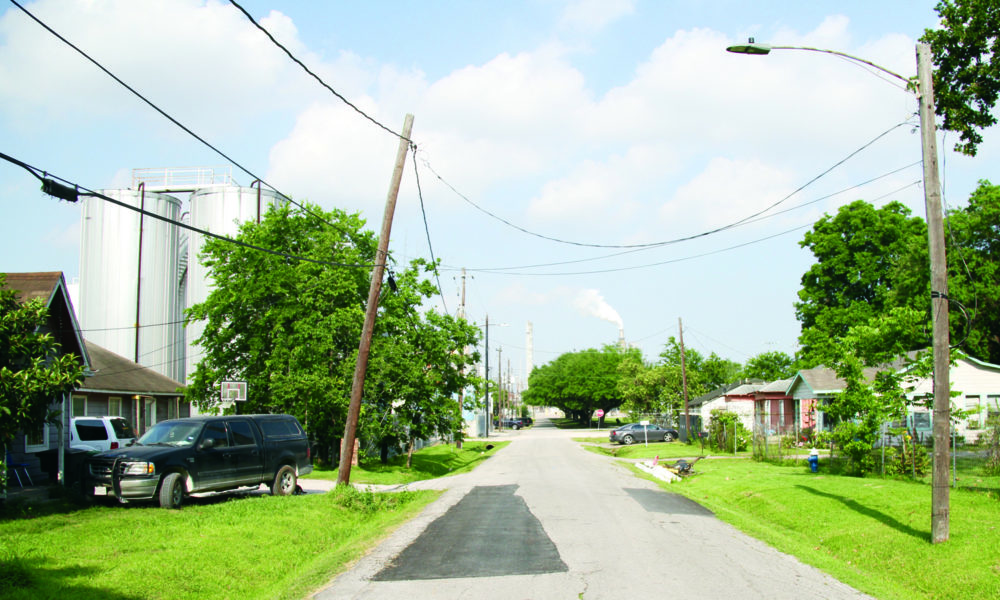The Environmental Protection Agency (EPA) has scheduled a series of two Virtual Public Listening Sessions — June 16th and July 8th — for the public to provide input on the EPAs Risk Management Plan (RMP) rule also known as the ‘Chemical Disaster Rule’. Along with members from various other environmental nonprofits, union labor organizations, and community organizations, UCS will be providing comments tomorrow, June 16th, on how the new rule can be improved.
Here’s what I plan to say during the public comment on Wednesday:
Good Afternoon
My name is Casey Kalman and I am a Geospatial Researcher at the Center for Science and Democracy at the Union of Concerned Scientists. We work to improve public policy through the application of rigorous and independent science.
I would like to bring to your attention new research that I carried out to quantify the risks posed to chemical facilities throughout the US from climate-related natural disaster-induced chemical and technological events also known as natech events.
Through geospatial analysis, we identified nearly 4,000 RMP facilities throughout the US located in areas known to be at risk of inland flooding, coastal flooding, storm surge, and wildfires. This equates to over 30% of all RMP facilities, a conservative estimate given the limitations of the data available to the public.
As climate change increases the frequency and intensity of natural disasters, chemical facilities throughout the US must be prepared for the worst-case scenarios in order to prevent unintentional fires, explosions, and releases of toxic chemicals into surrounding communities.
Already we see hundreds of natech events each year that exacerbate the trauma and destruction experienced after extreme weather events.
Take for example, the Arkema incident that occurred outside Houston following Hurricane Harvey in 2017. The Arkema facility followed their hurricane preparedness plan, but the facility was not prepared for the unprecedented amount of flooding that overtook their power systems. When systems failed, organic peroxides at the facility became unstable. The resulting fires necessitated the evacuation of 200 people and 21 people sought medical attention.
For a recent example, we need only look back to last hurricane season in which the BioLab chlorine production facility in Westlake, LA was damaged in the wake of Hurricane Laura causing the release of chlorine gas and, in the long term, contributing to a nation-wide chlorine shortage. Most important to note is that this chlorine facility is not regulated under the current Chemical Disaster Rule — this highlights not only the need to strengthen the current rule, but also increase the number of facilities regulated under RMP.
To make matters worse, these facilities are more likely to be located in low-income, majority BIPOC communities, making the issue of reforming, strengthening, and broadening the rule not just a matter of environmental health, but of environmental justice.
For these reason, it is essential for reform to the RMP rule to include the following:
First, we need to consider climate change when developing process hazard analysis, risk management plans, and natural disaster preparedness protocols.
Second, we must implement stronger disaster prevention measures, using inherently safer methods to more fully eliminate and control for catastrophic hazards.
Third, we need more common-sense emergency response measures including back-up power, microgrids, and multilingual alert systems to notify communities in advance of potential incidents.
And lastly, we must expand coverage of the RMP program to more facilities, processes and chemicals to prevent future events like the BioLab chlorine incident.
Climate change and the increased incidence of extreme weather events is not a future problem. We are seeing the affects almost every day throughout the country. We must act now to prevent future catastrophes.
Thank you.
If you are interested in providing public comment on RMP reform, you can submit comments up until July 16, 2021 through at http://www.regulations.gov (Docket ID No. EPA-HQ-OLEM-2021-0312).

